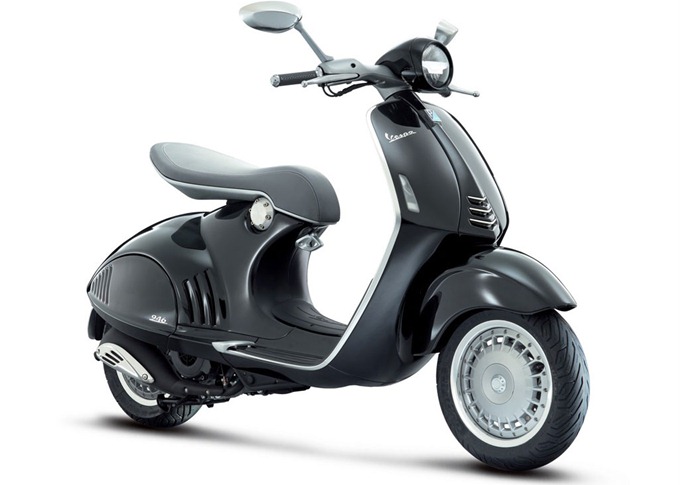Blog

Throwback On Vespa Bikes.
Vespa is an italian brand of scooter which means "wasp" in Italian. It was manufactured by Plaggio. The scooters have been known for their painted, pressed steel unibody which combines a complete cowling for the engine (enclosing the engine mechanism and concealing dirt or grease), a flat floorboard (providing foot protection), and a prominent front fairing (providing wind protection) into a structural unit.
It was founded 23rd day of April, 1946 in Florence.
In 1944, Renzzo Spolti and Vittorio Casini desgined a motorcycle with bodywork fully enclosing the drivetrain and forming a tall splash guard at the front. In addition to the bodywork, the design included handlebar-mounted controls, forced air cooling, wheels of small diameter, and a tall central section that had to be straddled.
The MP6 prototype had its engien mounted beside the rear wheel. The wheel was driven directly from the transmission, eliminating the drive chain and the oil and dirt associated with it. It included a single sided front suspension, interchangeable front and rear wheels mounted on stub axles, and a spare wheel. Upon seeing the MP6 for the first time, Enrico Piaggio exclaimed: "Sembra una vespa!" ("It resembles a wasp!") Piaggio effectively named his new scooter on the spot.
The thicker rear part connected to the front part by a narrow waist, and the steering rod resembled antennae.

New models were introduced to the original design. The 1948 Vespa 125 had rear suspension and a bigger engine. The headlamp was moved up to the handlebars in 1953, and had more engine power and a restyled rear fairing. A cheaper spartan version was also available. One of the best-loved models was the Vespa 150 GS introduced in 1955 with a 150 cc engine, a long saddle, and the faired handlebar-headlamp unit. Then came the 50 cc of 1963, and in 1968 Vespa 125 Primavera became one of the most durable of all.
Vespas came in two sizes - "largeframe" and "smallframe". The smallframe scooters came in 50 cc, 90 cc, 100 cc and 125 cc versions, all using an engine derived from the 50 cc model of 1963, and the largeframe scooters in 125 cc, 150 cc, 160 cc, 180 cc and 200 cc displacements using engines derived from the redesigned 125cc engine from the late 1950s.The largeframe Vespa evolved into the PX range in the late 1970s and was produced in 125, 150 and 200 cc versions until July 2007. Starting in 1981, an 80cc version was available as well. After production of the PX ceased, sales of the LML Star, an Indian-made copy of the PX, soared. Piaggio then reintroduced the PX 125 and 200 models in 2010.
The smallframe evolved into the PK range in the early 1980s, although some vintage-styled smallframes were produced for the Japanese market as late as the mid-1990s.
The ET model range stuck true to the wasp/aero design principles. It was lighter, more aerodynamic, had an automatic gearbox and could take a series of engines from a 50 cc in either two-stroke or four-stroke, up to a 150 cc four stroke.
In recent years, many urban commuters have purchased new or restored Vespas. A shortage of available parking for automobiles in large urban areas and the Vespa's low running costs are two reasons for the increase in Vespa (and other scooter) popularity. The cultural use of the scooter as a recreational vehicle with a sub-cultural following in the USA/Canada and parts of Europe & Japan has also contributed to the rise in Vespa ownership. In contrast, the Vespa is considered a utilitarian vehicle for hauling products and sometimes up to 5 family members in much of Asia and Mexico.
Posted on December 2016,15 // Author: Admin